
Are you new to contact lenses? Exciting times ahead! At Mac Nally Opticians, we’re here to guide you through this journey to clearer vision with ease.

Are you new to contact lenses? Exciting times ahead! At Mac Nally Opticians, we’re here to guide you through this journey to clearer vision with ease.
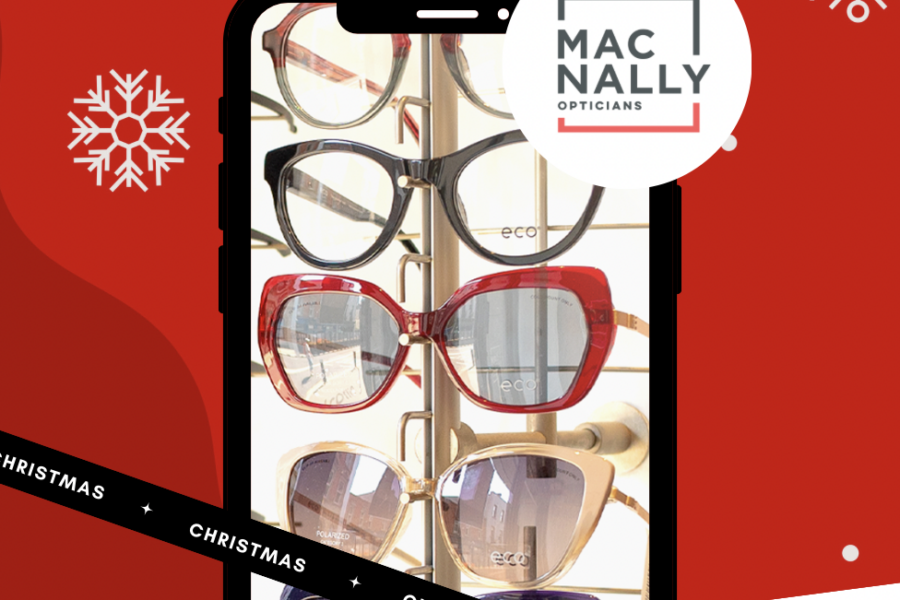
Tis the season to be jolly, and what better way to celebrate than by ensuring your vision is in top-notch condition to fully enjoy the magic of Christmas? In this festive blog post, we’ll explore the significance of clear vision during Christmas and share tips on how to keep your eyes merry and bright.

Deck the Halls with Eye-Friendly Lighting
When adorning your home with festive lights, opt for LED bulbs that emit less heat and are more energy-efficient. Proper lighting reduces eye strain. Ensure that your living space is well-lit, making it easier to read Christmas cards, unwrap presents, and enjoy holiday activities.
Digital Detox for Optimal Eye Health
‘Tis the season for sharing joy and laughter online, but excessive screen time can take a toll on your eyes. Take breaks from digital devices, practice the 20-20-20 rule (look at something 20 feet away for 20 seconds every 20 minutes), and prioritize quality time with loved ones in person.

The Joy of Clear Vision
The twinkling lights, vibrant decorations, and sparkling ornaments are all part of the enchanting visual spectacle that Christmas brings. To truly appreciate the beauty of the season, it’s essential to prioritize your eye health. Regular eye check-ups with us at Mac Nally Opticians can ensure that your vision is as sharp as Santa’s naughty-or-nice list.
Protecting Your Peepers from Winter Elements
As the temperatures drop, so does the humidity, leading to dry and irritated eyes. Combat the winter chill by keeping your eyes hydrated with artificial tears. Additionally, don a stylish pair of UV-protected sunglasses from our winter collection, here at Mac Nally Opticians, when outdoors to shield your eyes from the glare of the winter sun and harmful UV rays.
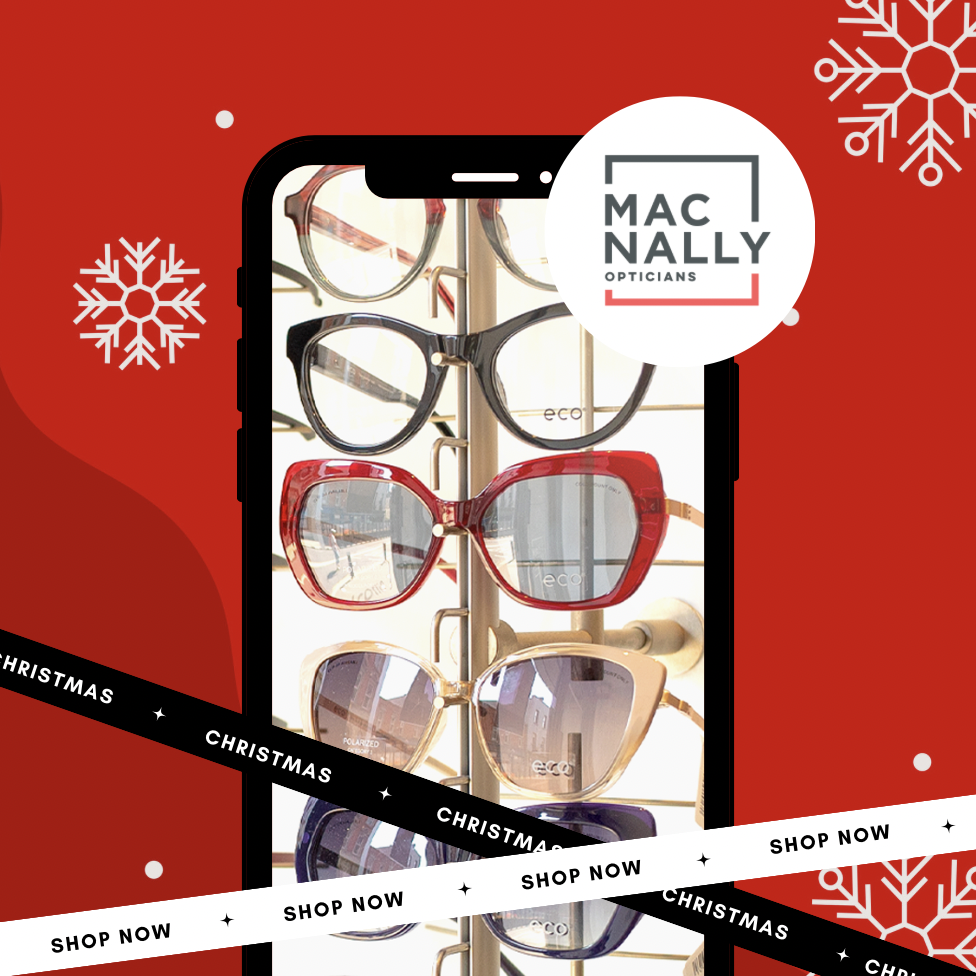
Healthy Treats for Healthy Eyes
While indulging in festive treats is part of the Christmas tradition, consider incorporating eye-healthy foods into your holiday menu. Foods rich in vitamins A, C, and E, as well as omega-3 fatty acids, contribute to optimal eye health. Include colorful vegetables, fruits, nuts, and fish in your holiday feasts.
Gifts of Vision
Show your loved ones you care by giving the gift of clear vision. We offer gift cards in store which makes it an even easier gift giving experience. You can also consider gifting stylish eyewear or a voucher for an eye examination. Vision-related gifts not only promote eye health but also make for thoughtful and practical presents.
This Christmas, let the magic of the season unfold through the lens of clear vision. By prioritizing eye health, you can fully immerse yourself in the festivities and create lasting memories with loved ones. From twinkling lights to heartfelt moments, may your holidays be filled with joy, laughter, and the gift of seeing the world in all its Christmas glory. Wishing you a merry and bright vision throughout the holiday season!
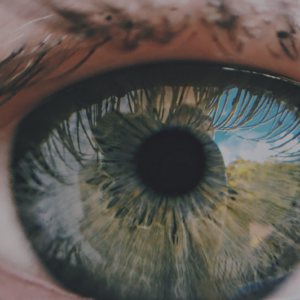
As the cold sets in and the temperature decreases it’s reasonable to believe that UV radiation is less of an issue. As important as it is in the summer, you need to take precautions to shield your eyes from the winter light. UV radiation is still a concern in colder climates with cloudy skies, therefore protecting your eyes becomes essential all year round.
Because of changes in the angle of the sun and Earth’s position throughout this time of year, there may be more UV exposure. Scenes covered in snow have the ability to reflect UV rays upward, acting as a mirror and enhancing their effects on human eyes. As a result, wearing eye protection in the winter is essential.
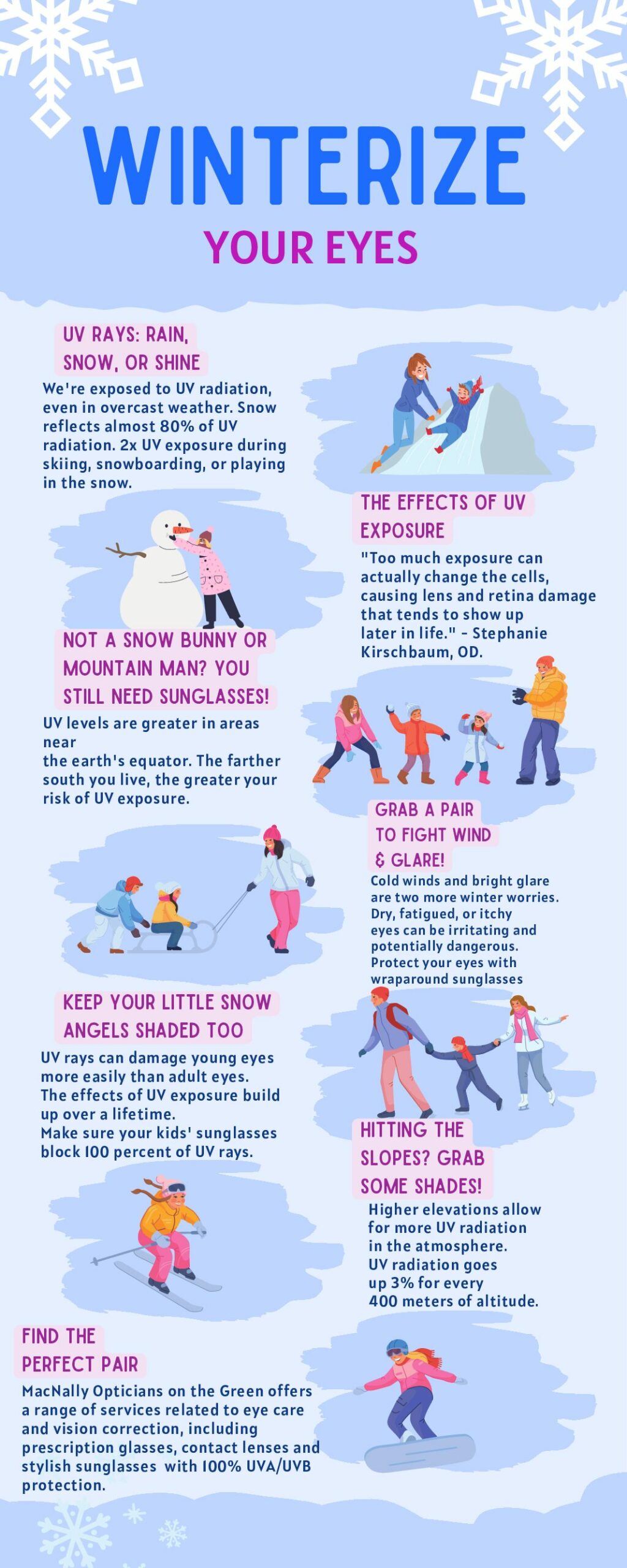
Given the significance of safeguarding your eyes during this season, follow these crucial guidelines to ensure the safety and security of your vision:
Put on Sunglasses with 100% UV Protection: Make an investment in premium sunglasses that offer complete UV protection. Seek out sunglasses that can protect UVA and UVB radiation. To further protect your eyes from the sides, think about wraparound designs or wider frames.
Think about photochromic lenses, which can adapt to different lighting conditions. When exposed to UV light, these lenses darken, providing convenience as they adjust to the varying light levels throughout the day.
To lessen glare from surfaces like snow and ice, which can seriously strain your eyes, choose polarised lenses.
Hats and Visors: Wear visors or hats with wide brims to complement your eye protection. Additional protection from both direct and reflected UV radiation is offered by these accessories.
Routine eye exams Make an appointment for routine eye exams with your optometrist. The winter is a great time to check your eyes and see if there are any issues. Drink plenty of water because the dry air and chilly winds of winter can cause pain and dry eyes. To keep your eyes lubricated, stay hydrated.
Digital Screens and Indoor Protection: Shield your eyes from blue light emitted by digital screens even throughout the winter. If you spend a lot of time in front of screens, you might want to get some blue light filtering glasses.
Don’t forget that cloudy days don’t always call for UV protection. It is a year-round requirement. The combined effects of UV exposure have been linked to a number of eye disorders, such as photokeratitis, cataracts, and macular degeneration.
This winter, choose wisely to protect your eyes. To get the finest eye protection for your needs, see your optician. During these chilly months, your eyes will appreciate the love and care you give them.
You may take in the beauty of the winter season and make sure your eyes stay healthy and clear for years to come by making eye protection a priority.

Fashion Week is the ultimate playground for style enthusiasts, where top designers showcase their latest creations and set the tone for the upcoming seasons. Amidst the whirlwind of haute couture and glamorous runway shows, one accessory has been increasingly in the spotlight: eyewear. In Fashion Week 2023, eyeglasses and sunglasses have once again taken center stage, with innovative designs and trends that promise to redefine the future of eyewear.
Oversized Frames: Oversized eyeglasses and sunglasses are making a bold comeback. Whether they are square, round, or cat-eye frames, the bigger, the better. This trend not only adds a touch of drama to your look but also provides extra sun protection.
Crystal Clear Frames: Transparent frames are all the rage this year. These nearly invisible frames are versatile and complement any outfit, making them a favorite among fashion-forward individuals.
Retro Revival: Nostalgia; a powerful force in fashion. Classic retro styles like aviators and round frames continue to be popular, especially when they come with modern twists.
Geometric Shapes: Unconventional geometric shapes, such as hexagons and octagons, are adding an edgy and futuristic element to eyewear. These frames are perfect for those who want to stand out.
Colorful Lenses: Colored lenses are not just for fun in the sun. They’re making their way into everyday eyewear. Tinted lenses in shades like pastel pink, blue, and yellow are elevating eyeglasses to a new level of chic.
Embellishments: Sparkling crystals, pearls, and intricate detailing are adorning frames, creating eyewear that’s truly a work of art. These embellishments turn glasses into statement pieces.

Customization: The future of eyewear may involve tailor-made glasses designed to perfectly suit an individual’s face shape, style, and vision needs.
Augmented Reality (AR): AR capabilities in eyewear are under exploration. Imagine trying on different frames virtually before making a purchase decision.
Health Monitoring: Eyewear that can monitor health metrics like blood pressure, blood glucose levels, or even detect early signs of diseases is on the horizon.
Fashion Week 2023 isn’t just about the here and now; it’s also about peering into the future of eyewear. Here’s what’s being discussed:
Smart Eyewear: The integration of technology into eyewear is a hot topic. Smart glasses that can display information, take photos, or even serve as fitness trackers are becoming more sophisticated and stylish.
Sustainability: The fashion industry, including eyewear, is increasingly focusing on sustainability. Eco-friendly materials, recycling programs, and ethical practices are at the forefront of eyewear discussions.


As an optician, staying ahead of the curve is essential. In the future, we can anticipate:
Enhanced Personalization: Eyewear that’s uniquely tailored to each individual’s preferences, including style and fit.
Sustainable Choices: Increasing demand for eco-friendly materials and manufacturing processes.
Technological Integration: The need to assist customers with smart eyewear options and provide guidance on their functionalities.
Health-Centric Eyewear: Keeping up with the latest advancements in eyewear technology for health monitoring and wellness.
Fashion Week 2023 has once again proven that eyewear is an integral part of personal style and self-expression. Embrace these trends and anticipate the exciting future of eyewear. Here at Mac Nally Opticians, we’re committed to offering you the latest in eyewear fashion and technology, ensuring you always see the world in style. Stay visionary! 👓🌟
Reference:
https://zunigaoptical.com/blogs/news/the-latest-eyewear-trends-from-paris-fashion-week-2023
https://www.feelgoodcontacts.ie/blog/london-fashion-week-best-eyewear-looks
https://visionplusmag.com/page/2/https://visionplusmag.com/article/dazzling-eyes-at-the-paris-fashion-week/

It might be difficult to decide whether to add contact lenses to your eyewear options, but it can also be a great way to improve your vision and change your appearance. There are many different types of contact lenses available, so it’s important to choose the one that’s right for you. Let us help you at Mac Nally Opticians on the Green.
Here are some things to consider when making the switch:

Appearance: Many people add in contact lenses because they feel self-conscious about wearing glasses. Contact lenses can help you feel more confident in your appearance by giving you a more natural look. It gives you an option to change up your look and not have to wear glasses all the time.
Vision correction: Contact lenses can be used to correct a variety of vision problems, including nearsightedness, farsightedness, and astigmatism. They can also be used to correct presbyopia, a condition that affects people over the age of 40 and makes it difficult to see objects up close.

Comfort: One of the biggest benefits of contact lenses is that they are often more comfortable than glasses in certain situations. They don’t fog up, slip down your nose, or get in the way when you’re playing sports or engaging in other physical activities.
Convenience: Contact lenses can offer greater convenience, than glasses. You don’t have to worry about carrying them around, you can travel light, adding freedom for different tasks or activities. Particularly the lens of choice nowadays, being a daily disposable, you are putting fresh new lenses into your eye everyday, avoiding the hassle of cleaning and storing contact lenses.

Safety: It’s important to follow the instructions for wearing and caring for your contact lenses to ensure that they are safe and effective. This includes washing your hands before handling your lenses, using the correct solution to clean and store them if needed, and replacing them as directed by your eye care professional.
Overall, adding in contact lenses can be a great choice for people who want to improve their vision, feel more comfortable, and change their appearance.
Needless to say, we recommend both options in your Eyewear wardrobes. In other words don’t fully substitute your specs for contacts or vice versa, alternate between the two, then you’ll experience the best of both worlds. So whilst playing sport, going to the gym or a social event, that’s the time to consider your contact lenses, then switch it up, by rocking your fabulous specs for other events or activities.
Luckily we have the right team to guide you through this transition. Just be sure to book your consultation with us at Mac Nally Opticians on the green and we will help you find the right pair and how to properly care for them.

An eye test is an essential part of maintaining your overall health and wellbeing. The eyes are one of the most important organs in the human body, and regular eye exams can help detect and prevent a wide range of issues that can impact your vision and overall health.

Eye exams can also help detect other health issues that may not have any obvious symptoms. For example, an eye exam can detect issues like high blood pressure, diabetes, and even some types of cancer. By catching these health issues early, you can get the treatment you need to improve your overall health and reduce your risk of serious complications.
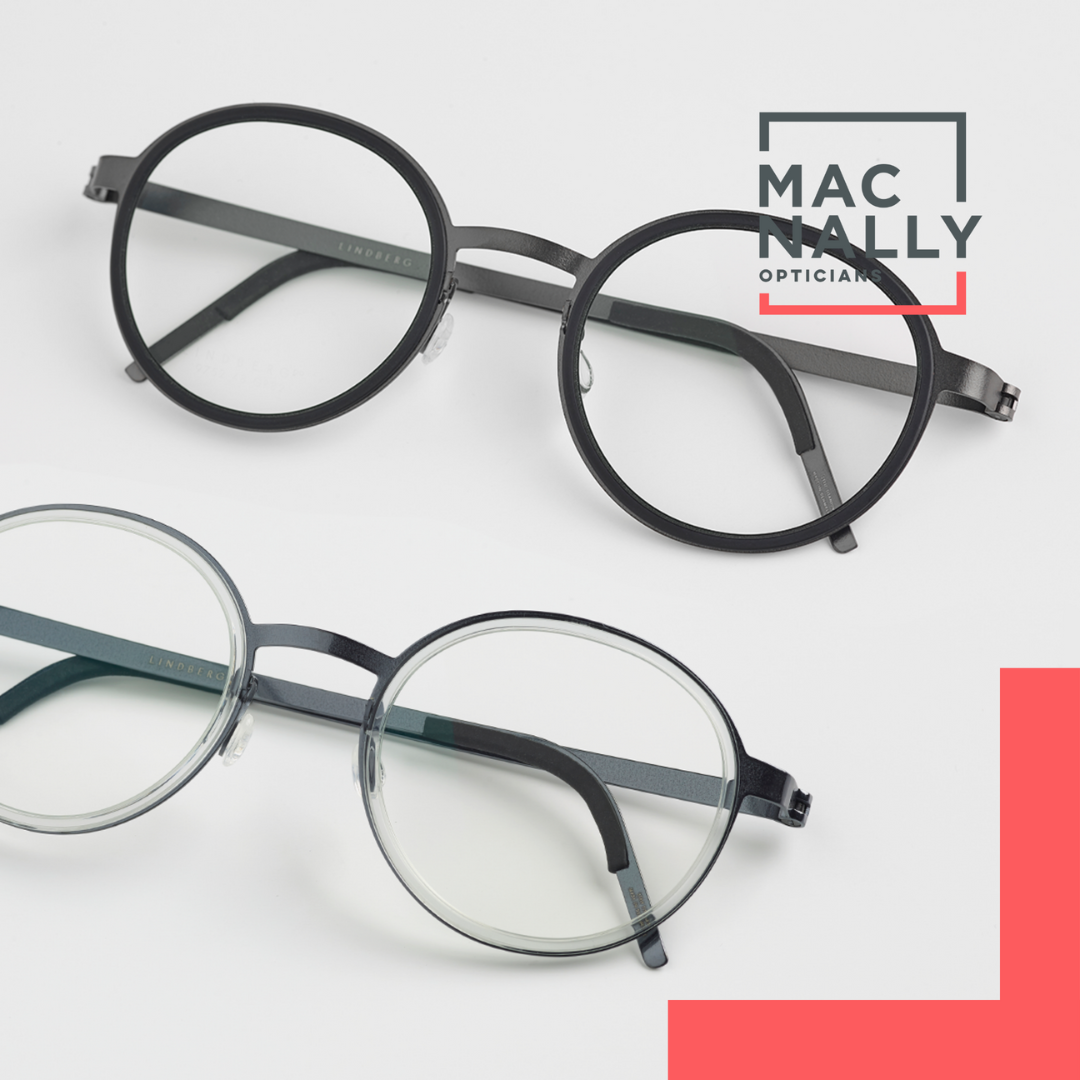
One of the main reasons why eye tests are so important is that they can help detect vision problems at an early stage. If you have poor vision, it can impact your daily life and make it more difficult to do things like read, drive, or work on a computer. By getting regular eye exams, you can catch vision problems early and get the treatment you need to improve your vision.

In addition to the health benefits, eye exams can also help you choose the right eyewear. Whether you need glasses, contacts, or both, an eye exam can help you determine the best options for your needs. This can help you see more clearly and comfortably, which can improve your quality of life.
Overall, it’s clear that eye exams are an important part of maintaining your health and wellbeing. If you haven’t had an eye exam in a while, it’s a good idea to schedule one with us at Mac Nally Opticians as soon as possible. We can help you determine how often you need to come in for exams based on your age, overall health, and any vision problems you may have. So don’t wait – make an appointment for an eye exam today and take the first step towards better vision and overall health.

Eyewear has come a long way in the past decade, with new styles and trends emerging every year. If you’re someone who loves to keep up with the latest fashion trends, then you’ll definitely want to stay up-to-date on the eyewear trends of the past decade.

In recent years, we have also seen the emergence of colorful frames. These frames, which are often made of acetate or plastic, come in a wide range of bright, bold colors that are sure to turn heads. They are perfect for those who want to add a pop of color to their eyewear.
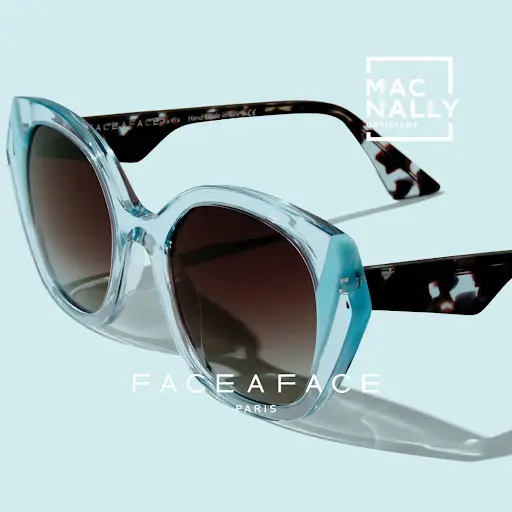
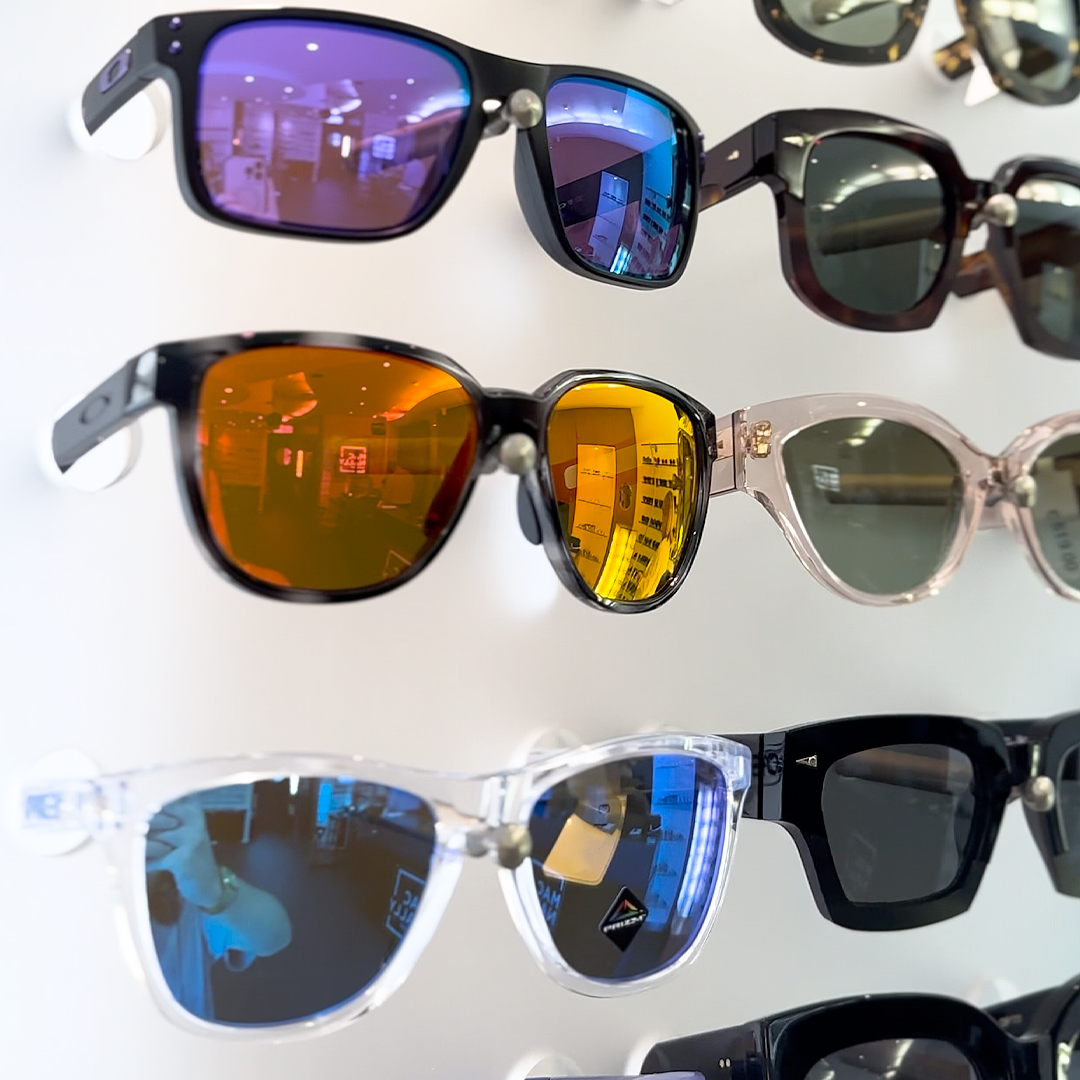
One of the biggest trends of the past decade has been the resurgence of vintage-inspired frames, as seen on #BradPitt attending the British Grand Prix in Dresner. These frames, which are typically made of acetate or metal, are characterized by their round or oval shapes and thin temples. They have a timeless, classic look that never goes out of style.

Another popular trend in eyewear has been the rise of oversized frames. These frames, which are often made of acetate or plastic, are characterized by their large size and bold, statement-making appearance. They are perfect for those who want to make a fashion statement with their eyewear.
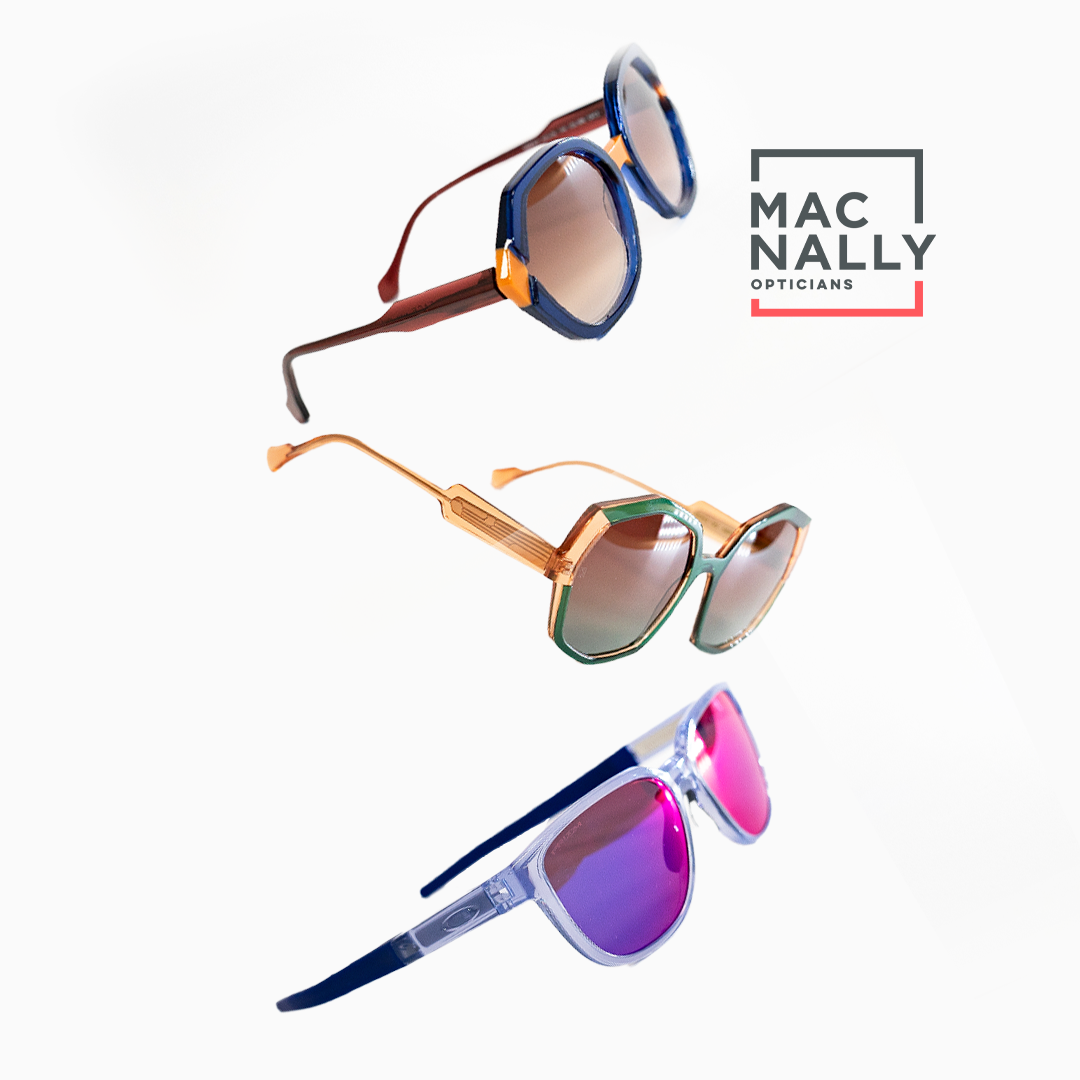
In addition to these trends, we have also seen the rise of sporty eyewear. These frames, which are often made of lightweight materials like plastic or metal, are designed for active people who need eyewear that can keep up with their lifestyle. They often feature wrap-around shapes and rubberized temples for a secure, comfortable fit.
No matter what your personal style is, there is sure to be an eyewear trend that suits you. Whether you prefer vintage-inspired frames, oversized frames, colorful frames, or sporty frames, there is something for everyone in the eyewear world. So why wait? It’s time to update your eyewear game and try out some of the hottest trends of the past decade!
Book a consultation with us today and let us help you pick out your perfect frame!
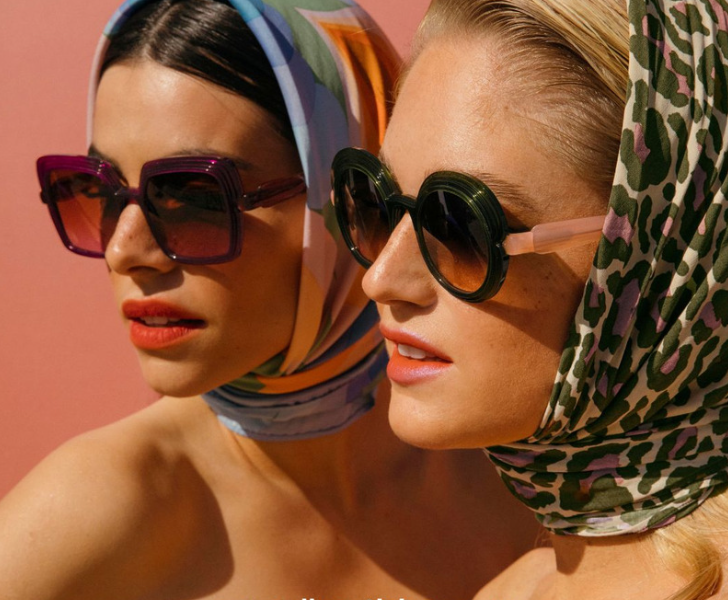
Summer is the perfect time to break out the sunglasses and protect your eyes from the harmful effects of the sun. Not only do sunglasses look stylish, they also provide a number of important health benefits. Here are a few reasons why you should be wearing sunglasses during the summer months:
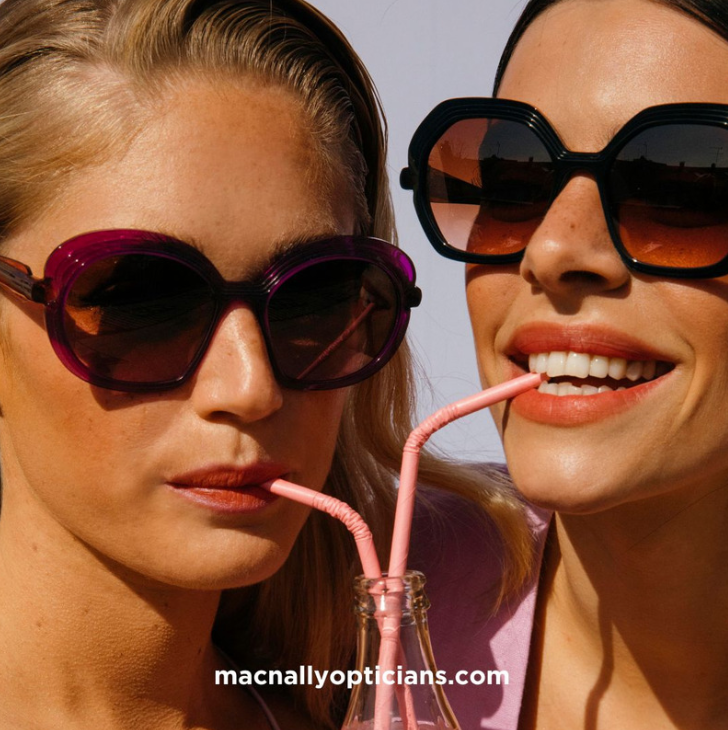
3. Prevent headaches: The sun’s glare can also cause headaches, especially for people who are sensitive to light. Wearing sunglasses can help prevent these headaches and keep you feeling comfortable and headache-free.
4. Look stylish: Of course, one of the best things about sunglasses is that they look great! There are so many different styles to choose from, so you can find a pair that suits your personal style and taste.
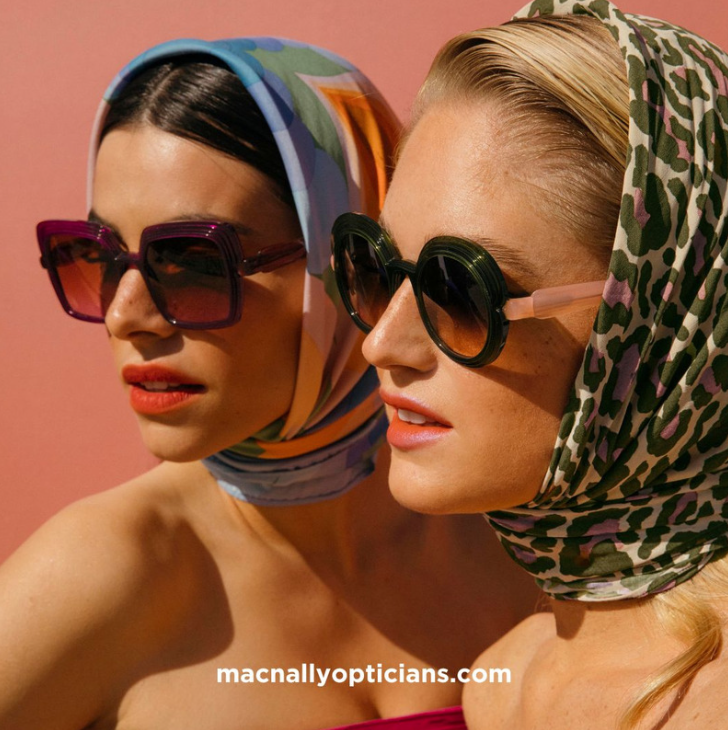
1. Protect your eyes from UV rays: The sun’s UV rays can be harmful to your eyes, causing cataracts, macular degeneration, and other vision problems. Wearing sunglasses with 100% UV protection can help protect your eyes from these harmful rays.
2. Reduce glare: Sunglasses can also help reduce glare, which can be especially useful when driving or participating in outdoor activities. Glare can be caused by the sun’s reflections off of surfaces like water or snow, and it can be distracting and dangerous.
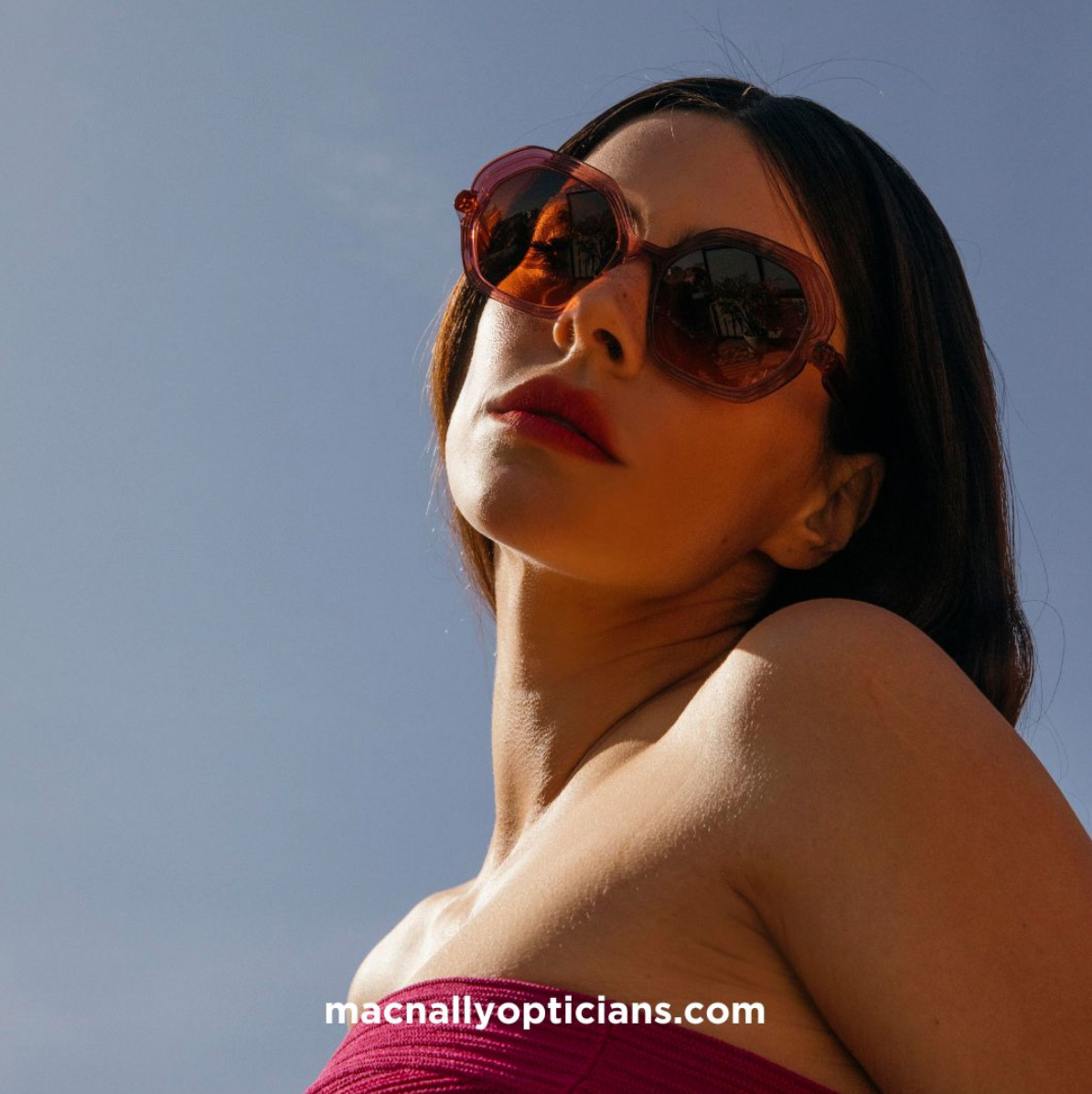
When shopping for sunglasses, be sure to look for a pair that offers 100% UV protection and has a good fit. Wraparound sunglasses are a good choice, as they provide extra protection for your eyes by blocking UV rays from the side. And don’t forget to clean your sunglasses regularly to keep them looking their best!
We at Mac Nally Optician advise all our clients to don their cool shades all year round, as UV is with us at all times. So, just like we protect our skin from UV with spf, we should do the same with our eyes by wearing our sunspecs year round!
Overall, sunglasses are a must-have accessory during the summer months. Whether you’re lounging by the pool or hitting the road for a road trip, a good pair of sunglasses can help protect your eyes and keep you looking stylish.

For us optometrists, the 20/20/20 rule is an important tool used to prevent eye strain and fatigue.
Do you know what this rule consists of?
This rule of thumb encourages users to take regular breaks from a digital device and look away from the screen every 20 minutes for 20 seconds at a point in the room that is 20 feet away.

That’s why the 20/20/20 rule is so important. Why don’t you give it a try?
All that you have to do is, every 20 minutes, look away from your digital device and focus on an object 20 feet away for 20 seconds.
This simple act can help prevent digital eye strain, allowing your eyes to relax and refocus.

By following this rule, individuals can reduce the risk of developing digital eye strain, which can cause discomfort, dryness, and blurred vision. Digital eye strain is a common problem for individuals who spend long hours looking at digital screens. Can you relate?
The symptoms caused can include headaches, fatigue, dry eyes, and blurred vision. And these can have a significant impact on an individual’s quality of life and can even lead to more serious eye conditions.

At Mac Nally Opticians, we encourage our patients to follow the 20/20/20 rule to reduce their risk of developing digital eye strain.
We have a variety of lenses that can ease your eye strain and tiredness as well as some beautiful frames to suit all styles and wants.
Book your eye test with us at Mac Nally opticians today!

When it comes to eyewear, finding a pair of glasses that not only correct your vision but also suit your face shape can be a daunting task. With a variety of styles and shapes to choose from, it’s important to consider the proportions of your face in order to achieve a balanced, flattering look.




First, let’s identify the different face shapes:
Now that you’ve identified your face shape, let’s discuss which eyewear styles will flatter your features:
In addition to face shape, it’s also important to consider skin tone, hair color, and personal style when selecting eyewear. With these tips in mind, you should be well on your way to finding the perfect pair of glasses that not only correct your vision, but also compliment your features.